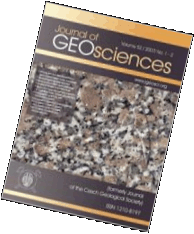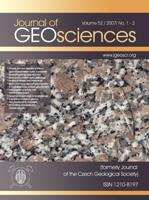 Export to Mendeley
Export to MendeleyBohemian Massif
EMPA
LA-ICP-MS
molybdenite
tungstenite
transitional Mo-W and W-Mo disulfides
Original paper
Molybdenite-tungstenite association in the tungsten-bearing topaz greisen at Vítkov (Krkonoše-Jizera Crystalline Complex, Bohemian Massif): indication of changes in physico-chemical conditions in mineralizing system
Journal of Geosciences, volume 60 (2015), issue 3, 149 - 161
DOI: http://doi.org/10.3190/jgeosci.197
At Vítkov, sparse molybdenite occurs within tungsten mineralization hosted by topaz greisen in orthogneiss in the envelope of the Variscan Krkonoše-Jizera granite Pluton (northern Bohemian Massif). Mineralogical study showed that sulfide mineralization started with precipitation of arsenopyrite followed by molybdenite, tungstenite, transitional Mo- and W-dominated disulfides and concluded by pyrite. Textural relationships between molybdenite and tungstenite imply that tungstenite was formed during several stages related to molybdenite bending and fracturing. Laser Ablation Inductively Coupled Mass Spectrometry (LA-ICP-MS) analyses of Re-poor (< 0.3 ppm) molybdenite showed extreme concentrations of W (up to 26 558 ppm) accompanied by Ag, As, Bi, Pb, Se, Te and other metals. Electron microprobe analyses of inclusions-free molybdenite confirmed the abundance of W (~0.5 wt. %) and tungstenite showed ~4 wt. % Mo, indicating a substitution of Mo4+ for W4+. Stability and phase relationships between molybdenite and tungstenite and locally identified transitional Mo- and W-dominated disulfidic phases suggest that tungstenite crystallization was triggered by a decrease in fO2 below WO2-WO3 buffer that followed after molybdenite precipitation. Tungstenite zoning and sharp tungstenite-molybdenite contacts indicate disequilibrium during their formation.
Webdesign inspired by aTeo. Hosted at the server of the Institute of Petrology and Structural Geology, Charles University, Prague.
ISSN: 1803-1943 (online), 1802-6222 (print)
email: jgeosci(at)jgeosci.org


IF (WoS, 2022): 1.4
5 YEAR IF (WoS, 2022): 1.8
Policy: Open Access
ISSN: 1802-6222
E-ISSN: 1803-1943